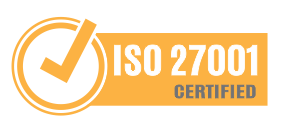Umberto Rosti & #8211; CEO [SAFEWAY]
O HIPAA - Health Insurance Portability and Accountability Act, went into effect in 1996 in the US in an attempt to reduce fraud and maintain the security and privacy of medical information.
This law also aims to:
- Protect and increase consumer rights by providing access to health information and by controlling improper use of this information.
- Improve the quality of medical care, restoring confidence in the health system among consumers and healthcare professionals.
- Improve health system efficiency and effectiveness, creating a national connection for health care and privacy protection.
Today, nearly 20 years after its inception, many benefits have emerged from the massive use of information technology, transforming the routine once done on paper, but new risks and threats to the operation of such businesses have emerged.
The investment in new technologies It is important not only to expedite care, but also to improve the quality, confidentiality and security of the entire healthcare business. From the simple examination process, where the result is available on the internet and can be accessed by both the patient and the doctor, as all the patient's health record and history that is in possession of this institution.
In Brazil, we are moving forward and creating standards to ensure the privacy of patient health information across hospitals, clinics, laboratories, and health plans. In 2004, ANS created the standardization of information exchange between operators and service providers.
In 2006 ANS published three normative resolutions with guidelines for the implementation of the system and the inclusion of information security in the health area, requiring compliance with ISO / NBR 27001 and the regulation of the storage of paper and digitized medical records. Other entities like CFM also have their regulations.
& #8220; A 2015 Ponemon Institute survey reports that the cost of health data leakage could reach US$5.6 billion annually.
Experian Data Breach Industry Forecast 2015 research, on the other hand, points out that data leakage threats are persistent and growing in healthcare.
& #8220; Experian expects leaks to grow due to the economic potential and digitization of medical records.
Healthcare institutions must know their technological risks and their impacts, mitigate them and ensure the resilience of their business before the medicine is too expensive.
Get to know CYBERSECURITY HEALTH CHECK which provides an overall assessment of internal and external IP infrastructure, employee habits and key Information Security processes to map key business risks and impacts.




